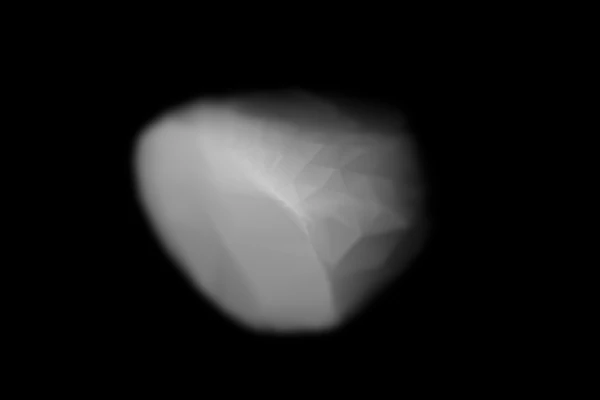
Image description: Ganymed (1036) is the largest near-Earth asteroid, measuring over 30 km in diameter. It is also an Amor asteroid and a Mars-crosser. Its next close approach to Earth will occur on October 13, 2024, at a distance of ≈0.374097 AU or 55,964,100 km. It will pass near Mars at a distance of 0.02868 AU or 4,290,000 km on December 16, 2176. Image source: under Creative Commons license.
Ganymed (1036) is the largest near-Earth asteroid (grazer). It measures over 30 km in diameter. Not to be confused with Jupiter's moon Ganymede, which is much larger (5,262 km) and is the largest moon in the solar system.
Ganymed (1036) was discovered by Walter Baade (1893-1960) on October 23, 1924. Its orbit is well determined, and its next close approach to Earth will occur on October 13, 2024, at a distance of ≈0.374097 AU or 55,964,100 kilometers. It is an Amor asteroid and a Mars-crosser. Ganymed (1036) will pass near Mars at a distance of 0.02868 AU or 4,290,000 km on December 16, 2176.
An article published in 1931 reported an absolute magnitude of 9.24, slightly brighter than the current value of 9.45. Ganymed is an S-type asteroid, meaning it is relatively reflective and composed of iron and magnesium silicates. In 1998, radar observations of Ganymed made by the Arecibo radio telescope showed an almost spherical asteroid. More recent observations of Ganymed's light curve reported in 2007 confirm a rotation period of 10.314 ± 0.004 h.
Although the asteroid Ganymed is a speck of dust on a cosmic scale with its 30 km diameter, it is a monster for Earth. Ganymed (1036) has a mass of 30,000 trillion tons and travels at a speed of 16.86 km/s.
On October 13, 2024, it will pass near Earth at a reassuring distance, equivalent to 147 times the Earth-Moon distance.
N.B.:
Amor asteroids are a family of near-Earth asteroids named after the asteroid (1221) Amor, discovered in March 1932, which has a particular characteristic. It does not cross Earth's orbit but grazes it, passing close to the outside of the Earth's orbit. These are external grazers, meaning they approach from outside Earth's orbit but do not cross it. Asteroids are classified in this family if their perihelion is strictly less than 1.300 AU.